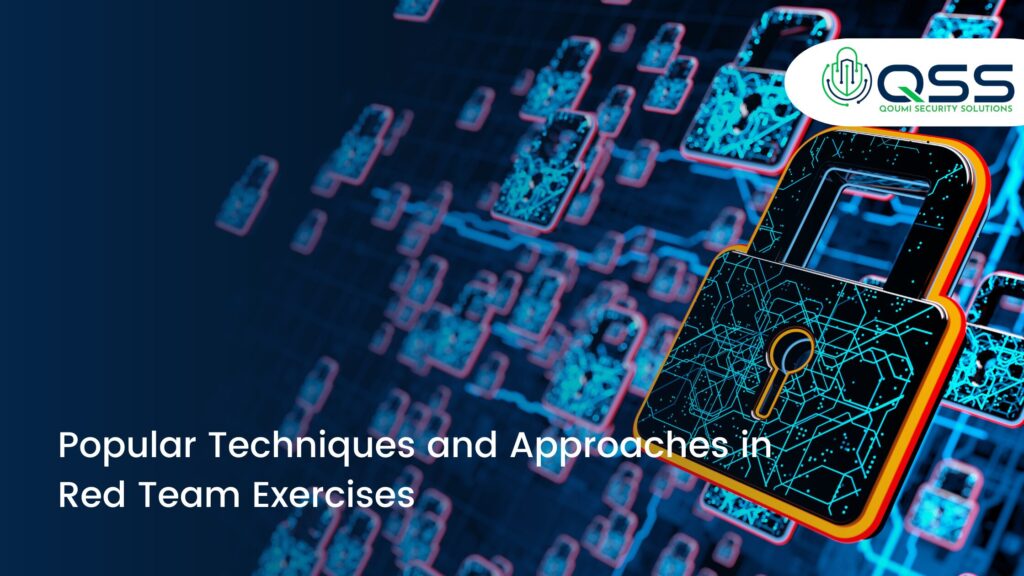Single Blog
Popular Techniques and Approaches in Red Team Exercises
Popular Techniques and Approaches in Red Team Exercises

Red Team exercises are offensive security simulations where ethical hackers adopt the role of adversaries to test the resilience of an organization’s cybersecurity defenses. These exercises mimic real-world attack scenarios to uncover vulnerabilities and assess the organization’s detection and response capabilities. In this blog, we will explore the most popular techniques and approaches used in Red Team exercises, detailing how they simulate advanced threat tactics.
1. Reconnaissance and Information Gathering
The first step in any Red Team operation involves gathering as much information as possible about the target organization. This phase focuses on understanding the target’s infrastructure, employee information, and potential entry points.
Common Techniques:
- Open Source Intelligence (OSINT): Collecting information from public sources like social
media, company websites, and job postings. - Network Scanning: Identifying IP addresses, open ports, and services using tools like Nmap
and Shodan. - Email Harvesting: Extracting email addresses for phishing campaigns.
- Passive DNS Monitoring: Analyzing DNS records to gather information about the
organization’s domain structure.
Purpose:
To create a detailed attack plan by identifying potential weaknesses and high-value targets.
2. Social Engineering Attacks
Human error is often the weakest link in cybersecurity. Red Teams frequently use social engineering tactics to manipulate employees into revealing sensitive information or performing unauthorized actions.
Common Techniques:
- Phishing: Crafting fraudulent emails that trick users into clicking malicious links or providing login credentials.
- Spear Phishing: Targeted phishing attacks directed at specific individuals, often using
personalized information. - Phone Pretexting: Impersonating IT support or other trusted personnel over the phone to obtain information.
- Physical Tailgating: : Gaining unauthorized access to premises by following an employee through a secure door
Purpose:
To test the organization’s security awareness and the effectiveness of security training programs.
3. Exploitation of Vulnerabilities
Once potential entry points are identified, Red Teams attempt to exploit vulnerabilities in the
organization’s systems, networks, or applications.
Common Techniques:
- Privilege Escalation: Gaining higher access privileges through misconfigurations or known exploits.
- Application Exploits: Targeting web applications using vulnerabilities like SQL Injection and Cross-Site Scripting (XSS).
- Credential Stuffing: Using stolen usernames and passwords to gain unauthorized access.
- Zero-Day Exploits: Leveraging unknown vulnerabilities to penetrate systems.
Purpose:
To test the robustness of the organization’s patch management and vulnerability assessment processes.
5. Command and Control (C2) Infrastructure
Red Teams establish a Command and Control (C2) infrastructure to maintain communication with compromised systems and execute further commands.
Common Techniques:
- Custom C2 Frameworks: Setting up bespoke C2 servers to avoid detection by security
solutions. - Obfuscation: Masking malicious traffic as legitimate network activity
- Beaconing: Periodic communication with compromised devices to maintain persistence..
Purpose:
To simulate advanced persistent threats (APTs) and test the organization’s ability to detect covert communication.
6. Data Exfiltration Techniques
One of the key objectives of Red Team exercises is to simulate the theft of sensitive data to evaluate the organization’s data protection mechanisms.
Common Techniques:
- Steganography: Hiding data within images or other file types.
- DNS Tunneling: Exfiltrating data through DNS queries.
- File Compression and Encryption: Compressing and encrypting data before exfiltration to evade detection.
- Cloud Misuse: Exploiting cloud storage services for data transfer.
Purpose:
To evaluate data loss prevention (DLP) strategies and assess how well sensitive information is protected.
7. Persistence and Backdoor Creation
Red Teams often attempt to maintain access to compromised systems for extended periods,
simulating long-term threat actor behavior.
Common Techniques:
- Registry Modifications: Creating registry keys to execute malicious payloads on startup.
- Scheduled Tasks: Setting up automated tasks to maintain access.
- Malware Deployment: Installing custom backdoors that avoid detection by antivirus solutions.
- Credential Storage Abuse: Using cached credentials to regain access.
Purpose:
To test the organization’s incident response capabilities and persistence detection mechanisms.
8. Red Team Collaboration and Reporting
A crucial aspect of Red Team exercises is documenting findings and collaborating with stakeholders to improve the organization’s security posture.
Key Activities:
- Comprehensive Reporting: Detailing vulnerabilities, attack paths, and successful exploits.
- Risk Mitigation Recommendations: Providing actionable advice to address identified
weaknesses. - Post-Exercise Debriefing: Conducting sessions with Blue Teams to share insights and improve defenses.
Purpose:
To ensure that the organization learns from the exercise and implements security improvements.



